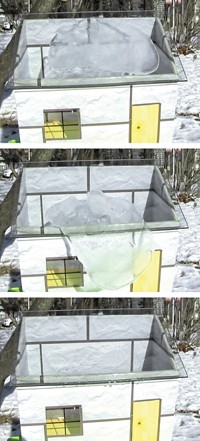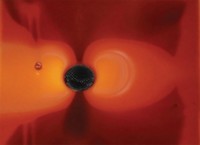Advertisement
Grab your lab coat. Let's get started
Welcome!
Welcome!
Create an account below to get 6 C&EN articles per month, receive newsletters and more - all free.
It seems this is your first time logging in online. Please enter the following information to continue.
As an ACS member you automatically get access to this site. All we need is few more details to create your reading experience.
Not you? Sign in with a different account.
Not you? Sign in with a different account.
ERROR 1
ERROR 1
ERROR 2
ERROR 2
ERROR 2
ERROR 2
ERROR 2
Password and Confirm password must match.
If you have an ACS member number, please enter it here so we can link this account to your membership. (optional)
ERROR 2
ACS values your privacy. By submitting your information, you are gaining access to C&EN and subscribing to our weekly newsletter. We use the information you provide to make your reading experience better, and we will never sell your data to third party members.
Materials
Device Skates Between Oil, Water
Nanoscience: An oil-repellant coating that works underwater could lead to robots that can clean oil spills
by Katherine Bourzac
June 11, 2012
| A version of this story appeared in
Volume 90, Issue 24

Taking inspiration from water-striding insects, researchers have constructed a device that can skate at the interface between oil and water (ACS Nano, DOI: 10.1021/nn301550v). The feat is enabled by a coating on the device’s legs that repels oil underwater. Such coatings could keep bugs from sticking to car windshields, scientists think, and enable robots to move through and clean up oil spills.
Researchers had previously discovered that water striders’ legs work through the chemistry and physics of microprojections lined with nanogrooves on the bugs’ legs (Nature, DOI: 10.1038/432036a). Shutao Wang, of the Chinese Academy of Sciences, thought that he could use similar structures to solve a materials problem: Most materials that repel oil don’t work if they come into contact with water.
To make a rough nanoscale coating that approximates the texture of the insects’ legs, Wang’s group immersed copper wires in aqueous ammonia. The ensuing reaction produced flowerlike microclusters of copper oxide nanopetals on the wires. When the researchers placed the coated wires in water and added drops of 1,2-dichloroethane, an oil denser than water, oil droplets beaded up on the wires, indicating that the coated wires repel the oil even in the presence of water.
To make an oil strider, they tied copper wires to a copper plate that mimicked the insect’s body. They bent each of the four legs, dipped the legs in ammonia, and tested the strider’s seaworthiness. In an agitated container of oily water, the strider skated on the surface between oil and water, just as a water-striding insect moves on the surface between water and air. Wang says the coating method could work with other metals, which could be coated through a similar oxidizing treatment, and with polymers, which would be coated with a metal oxide.
Eric Loth, of the University of Virginia, who works on oleophobic coatings for ships and planes, says a coating that works underwater like Wang’s could help ships save fuel by preventing barnacles and other sea creatures from growing on the hulls and thus reducing drag.





Join the conversation
Contact the reporter
Submit a Letter to the Editor for publication
Engage with us on Twitter